Aristolochia watsonii, Watson's Dutchman's Pipe
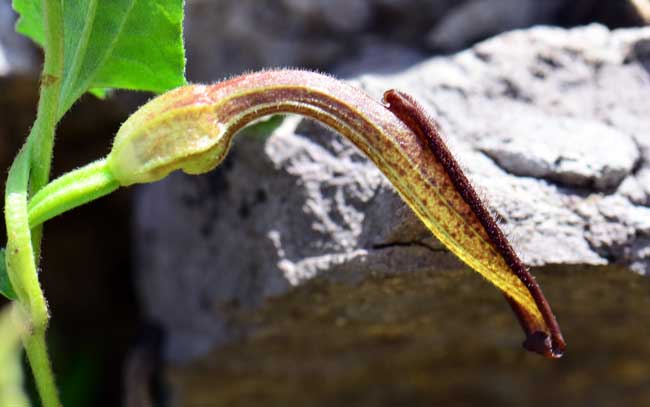
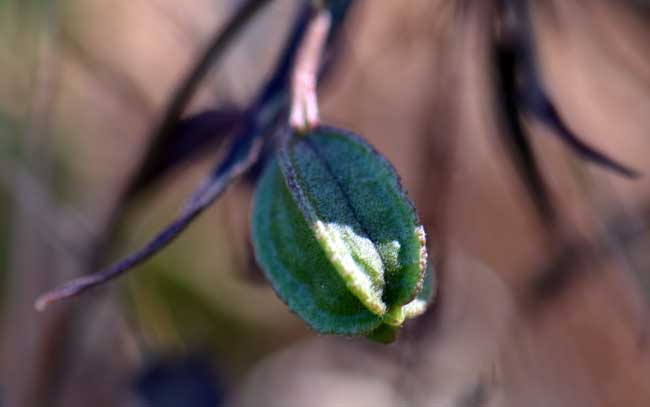
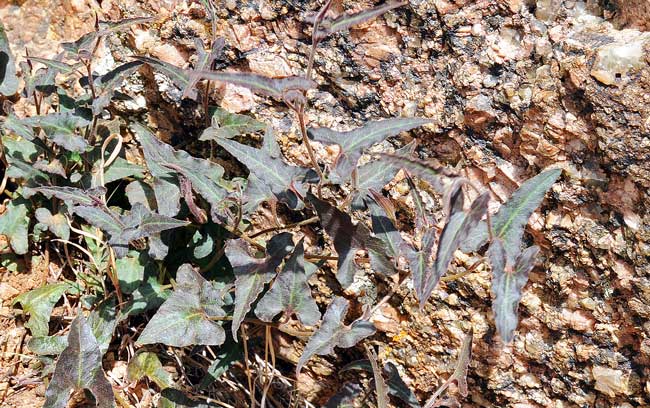
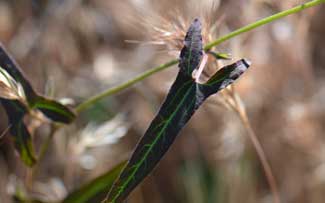
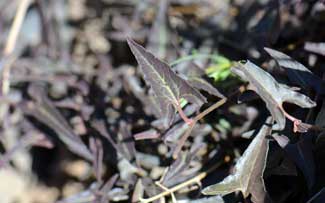
Scientific Name: Aristolochia watsonii
Common Name: Watson's Dutchman's Pipe
Also Called: Birthwort, Indian Root, Snakeroot, Southwestern Pipevine; (Spanish: Hierba del Indio, Guaco, Yerba del Indio)
Family: Aristolochiaceae, Birthwort Family
Synonyms: (Aristolochia porphyrophylla)
Status: Native
Duration: Perennial
Size: 6 inches or more off the ground, 1 to 2 feet wide or more.
Growth Form: Forb/herb, vine; low growing spreading along the ground (procumbent), multiple branches.
Leaves: Dark green; alternate, leaf-shape is triangular, arrow or spear-like (sagittate or hastate), underside of leaf with whitish pubescence (tomentose).
Flower Color: Green, brown or brownish purple and orange or maroon spots; single flowers with short flowering stem, originates in leaf or stem axillaries, fruit is multi-seeded capsule.
Flowering Season: April and again in October, (spring-summer).
Elevation: 1,000 to 4,500 feet.
Habitat Preferences: Various habitats in upper and lower deserts, rocky hillsides and open areas.
Recorded Range: Rare in the United States where it is native to Arizona and New Mexico; found throughout most of Arizona and extreme southeast corner of New Mexico. This species is also found in Baja California and northwest Mexico.
North America & US County Distribution Map for Aristolochia watsonii.
U.S. Weed Information: No data available.
Invasive/Noxious Weed Information: No data available.
Wetland Indicator: No data available.
Threatened/Endangered Information: No data available.
Comments: Watson’s Dutchman’s Pipe is a dull-green low growing vine with a fetid odor found throughout much of Arizona. It has most unusual looking flowers which are pollinated by complex insect interaction.
According to Arizona Flora, "Indian Root" as it was called locally was used as a snakebite remedy by Native Americans and early settlers.
In Arizona and elsewhere, Watson’s Dutchman’s Pipe serves as host plant to the Pipevine or Blue Swallowtail butterfly, (Battus philenor). This butterfly has developed immunities to the plants acidic toxins which are fatal to other herbivorous predators. Additionally the butterflies pass the toxins and immunities on to their larvae caterpillars thus protecting the caterpillars against their own potential predators.

